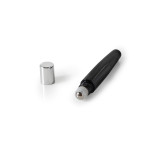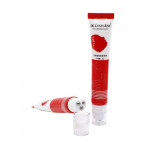
Introduction
The cosmetics industry is increasingly prioritizing sustainability and environmental responsibility. This blog post focuses on the vital role of recycled materials and the design of recyclable packaging for eye cream products, aligning with both industry trends and consumer expectations.
The Sustainability Imperative
As environmental awareness grows, so does the demand for eco-friendly packaging solutions. Traditional packaging materials often have a significant environmental footprint, prompting the need for more sustainable alternatives that minimize impact and support conservation efforts.
Recycled Materials in Eye Cream Packaging
Utilizing recycled materials in packaging offers several benefits:
- Common Materials: Recycled plastics, glass, aluminum, and paper are increasingly used in packaging to help reduce the consumption of raw resources.
- Environmental Benefits: Incorporating recycled content can significantly lower the environmental impact by reducing waste and resource use.
- Sourcing Challenges: While the benefits are clear, sourcing high-quality recycled materials can present challenges, including variability in supply and material integrity.
Recyclable Packaging Design
Designing for recyclability is crucial in minimizing waste:
- Material Choices: Using single-material components when possible and avoiding composites makes recycling easier and more efficient.
- Recycling Stream Compatibility: Selecting materials that are widely accepted in recycling programs ensures that packaging can be effectively processed.
- Component Separation: Designing packaging that can be easily disassembled aids in the recycling process.
Labeling and Consumer Education
Effective labeling and education are key to ensuring proper recycling practices:
- Clear Instructions: Labels should clearly instruct consumers on how to recycle packaging correctly.
- Addressing Misconceptions: Educating consumers about recycling processes can help improve recycling rates and prevent contamination.
- Partnerships: Working with waste management organizations can enhance the effectiveness of recycling programs.
Circular Economy and Closed-Loop Systems
The circular economy model is increasingly influential in the packaging sector:
- Designing for Reuse: Encouraging practices like refilling and reusing packaging reduces waste and resource use.
- Recycling Initiatives: Take-back programs and other recycling initiatives help maintain material within the economic system.
- Supply Chain Collaboration: Collaborating with partners to establish closed-loop systems where materials are continually recycled can drastically reduce waste.
Regulatory Landscape and Certifications
Navigating the regulatory environment is crucial for compliance and innovation in packaging:
- Waste Management Regulations: Adhering to local and international regulations ensures that packaging practices are sustainable and legally compliant.
- Certifications: Certifications like Cradle to Cradle and RecyClass lend credibility to claims about recyclability and recycled content.
- Transparency: Accurate and transparent claims about packaging are essential for consumer trust and regulatory compliance.
Case Studies: Successful Recycled and Recyclable Packaging
Several brands have successfully integrated recycled and recyclable materials into their packaging designs:
- Material Rationale: Explaining the choice of materials and design principles that contribute to successful recycling.
- Brand and Consumer Impact: Demonstrating how sustainable packaging enhances brand image and aligns with consumer values.
- Commercial and Environmental Success: Discussing the broader impacts of these initiatives on the market and environment.
Challenges and Considerations
Despite the advantages, there are inherent challenges in using recycled materials:
- Material Supply: Ensuring a consistent supply of high-quality recycled materials can be difficult.
- Performance Standards: Maintaining the efficacy and safety of packaging while using recycled materials requires careful testing and validation.
- Cost Management: Balancing the costs of sustainable materials and processes with financial sustainability is often challenging.
Conclusion
Recycled and recyclable materials are transforming eye cream packaging, pushing the cosmetics industry towards more sustainable practices. By prioritizing these materials and educating consumers, brands can significantly contribute to a more sustainable future and enhance their market position.
Learn more about our sustainable packaging efforts
This comprehensive approach not only meets consumer demands but also fosters industry-wide changes towards a circular economy, showcasing the cosmetics sector's commitment to environmental stewardship.











